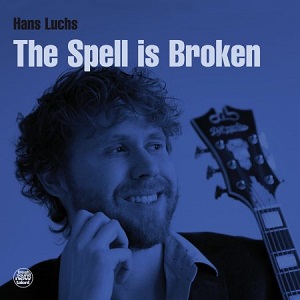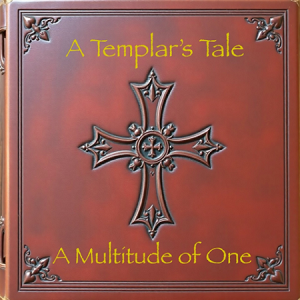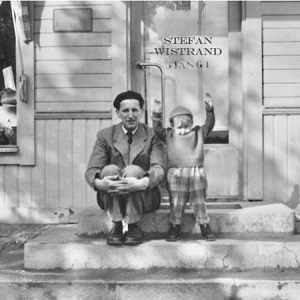Album review overview: Lou-Adriane Cassidy, A Multitude of One and more
Dozens of new albums arrive at Maxazine’s editorial staff every week. There are way too many to listen to them all, let alone review them. It ensures that too many albums are left behind. And that’s a shame. That is why today we post an overview of albums that arrive at the editors in short reviews.
Hans Luchs – The Spell is Broken
Guitarist and composer Hans Luchs has more than enough flight hours as a frequent guest in numerous jazz clubs and at major festivals, particularly in and around Chicago. Luchs has since moved to New York, and thus this “The Spell is Broken” is called his New York debut, where he is joined by a formidable band, all of whom are based in the Big Apple: alongside Luchs, we hear a stellar lineup with Simon Willson on bass, Adam Arruda on drums, Mike King on piano, and Daniel Berkey on saxophone, all highly sought-after session musicians who are given the space by Luchs to leave their mark on the eight tracks of “The Spell is Broken.” For example, “Azizam” opens with Berkey’s saxophone before we hear Luchs’s fingers touch the strings. Right away, the light touch and dynamics in his playing stand out. On “Hang Hostage,” Willson shows what he can do on an upright bass: in addition to solos, he provides the track with a delightful beat, leaving ample room for King’s piano playing. It is a beautiful example of how Luchs plays in service of the compositions and the band, whereas other guitarists sometimes fall prey to endless ego trips on six strings. However, “The Spell is Broken” does lack some tension; there isn’t a real standout among the eight tracks on the album. For those who enjoy more classical jazz with a prominent role for the hollow-body guitar, this is still a fine record. (Jeroen Mulder) (7/10) (Fresh Sound Records)
A Multitude of One – A Templar’s Tale
Multi-instrumentalist Colin Powell (England) is the man behind A Multitude of One. In the concept album “A Templar’s Tale,” the fictional Sir Geoffrey de Beaumont tells of the Templars. Colin delivers his lyrics half-spoken, half-sung. His voice sounds distorted, but his enunciation is clear. The vocals are stacked at times, and the distinctive color remains present. As the tempo of the singing increases, it doesn’t get stronger. The “choir vocals” often blend with the music. Singing and music aren’t as intense or captivating as hoped, and the atmosphere of knights is only truly felt in “The Battle of Acre,” which consists of three beautiful chapters. A deep voice tells the story. The classical elements are well incorporated. Both the number of rocking ’70s elements and the unexpected twists and turns are a bit less than expected. For most drum parts, he used keyboard drums, which resulted in a lack of dynamism. Furthermore, it sometimes draws too much attention away from the rest of the music. The details on the cymbals are good. The sound of the music is clear, and the layers are well distributed over the headset. (Esther Kessel-Tamerus) (7/10) (Self-produced)
Stefan Wistrand – Stängt
Like many artists, saxophonist Stefan Wistrand was confronted in 2020 with a world that was locked down. This is a bit odd, considering Wistrand is Swedish, and Sweden was one of the few countries that did not implement a nationwide lockdown in 2020. In any case, during that period, Wistrand composed the tracks for “Stängt” – meaning “closed” in Dutch. In the solitude of his home studio, he recorded the tracks in a minimalist form using keyboards and drum loops. This formed the basis for the improvisations on the saxophone. “Stängt” does not surprise me on the first listen: it all sounds somewhat flat and uninspired. Only after a few listens do you discover the true goal Wistrand is aiming for: fully free jazz in which everything revolves around the versatility of the saxophone, as demonstrated in the beautifully crafted “Dagvill” (dreams), where the saxophone gracefully improvises over just a few chords from a Fender Rhodes and a languid rhythm on real drums. The tempo picks up in “Sweet Now,” where the rhythm is determined by a drum sample, and the alto sax is replaced by a soprano. Unfortunately, we must conclude that these are the highlights of the album, in which the use of samples and loops eventually becomes irritating, with the bloodless “Before Today” as the ultimate example of a track that becomes really annoying after two minutes. Not even Wistrand’s virtuosic playing can save it. Time to stop. (Jeroen Mulder) (6/10) (Einnicken Records)
Ale Hop & Titi Bakorta – Mapambazuko
Nyege Nyege Tapes, based in the vibrant city of Kampala, opens the doors to Africa’s hidden musical treasures, and with “Mapambazuko,” they bring an incredibly addictive adventure. Peruvian sound wizard Ale Hop and Congolese guitar hero Titi Bakorta come together in an enchanting collaboration that your ears won’t soon forget. This is music that dances on the edge of tradition and experiment. Bakorta’s guitar slithers like a playful snake through the electronic jungle that Hop builds around him. On “Una cumbia en Kinshasa,” Peruvian cumbia and Congolese pop merge like two old friends who are finally reunited. From the sparkling opening track “Bonne année” to the dreamy closer “Nitaangaza,” the album continues to surprise. The added remixes, with KMRU’s ethereal reinterpretation standing out, are like a refreshing dessert after a rich main course. “Mapambazuko” proves that musical boundaries are meant to be joyfully crossed. An album that gets both your head and hips moving. (Jan Vranken) (8/10) (Nyege Nyege Tapes)
Lou-Adriane Cassidy – Journal d’un loup-garou
In the nocturnal landscapes of the Canadian indie scene, Lou-Adriane Cassidy’s “Journal d’un loup-garou” sneaks in as a captivating transformation. This third album from the Quebec artist is a refined example of ambitious, cinematic pop that flirts with prog-rock while delving deep into the personal. The opening track “Dis-moi, dis-moi” shines like a full moon over a dark forest, with mesmerizing strings dancing around an irresistible melody. Cassidy’s fragile and powerful voice tells stories of metamorphosis and self-discovery. The title track is a masterful composition in which marimba, guitar, and electronic textures merge into a hypnotic dance. Where her earlier work was still searching, Cassidy shows a mature voice rooted in the rich French-speaking pop tradition but looking ahead. With producer Alexandre Martel, she creates a world where Genesis and Céline Dion meet in a midnight café. “Journal d’un loup-garou” is a rare find: a pop album that dares to be accessible and adventurous. A Canadian gem that deserves to shine in Europe as well. (Elodie Renard) (8/10) (Bravo Musique)










